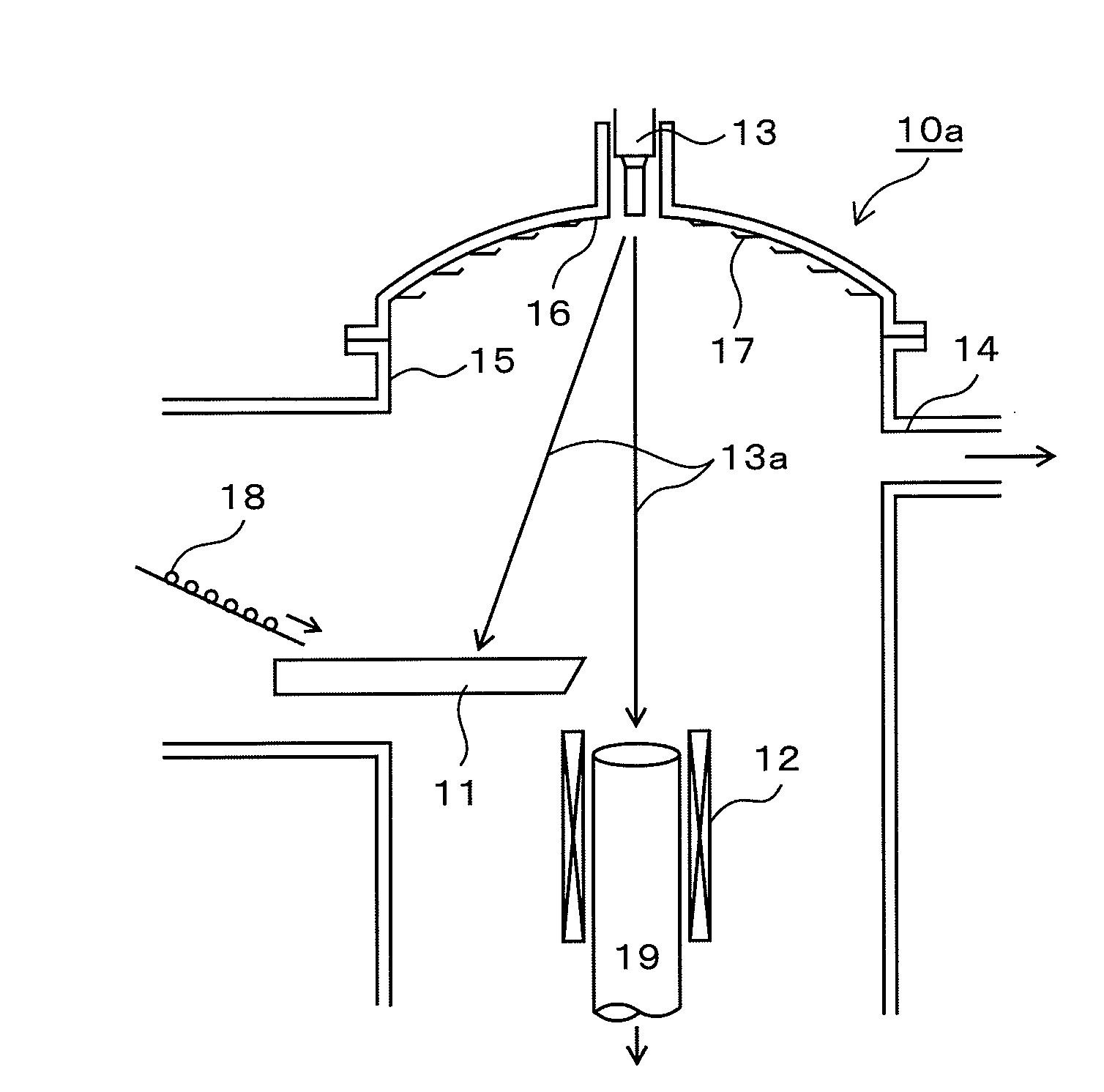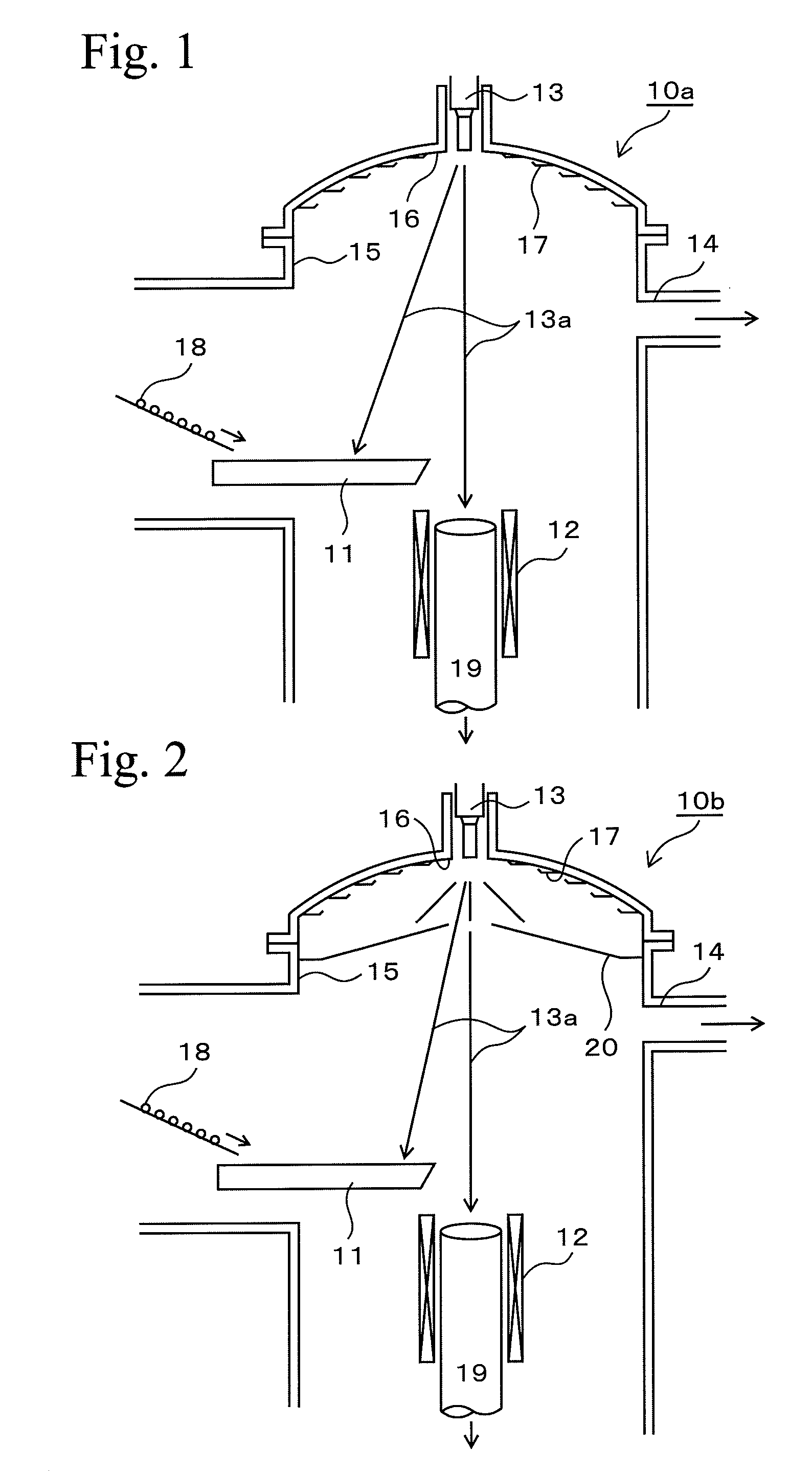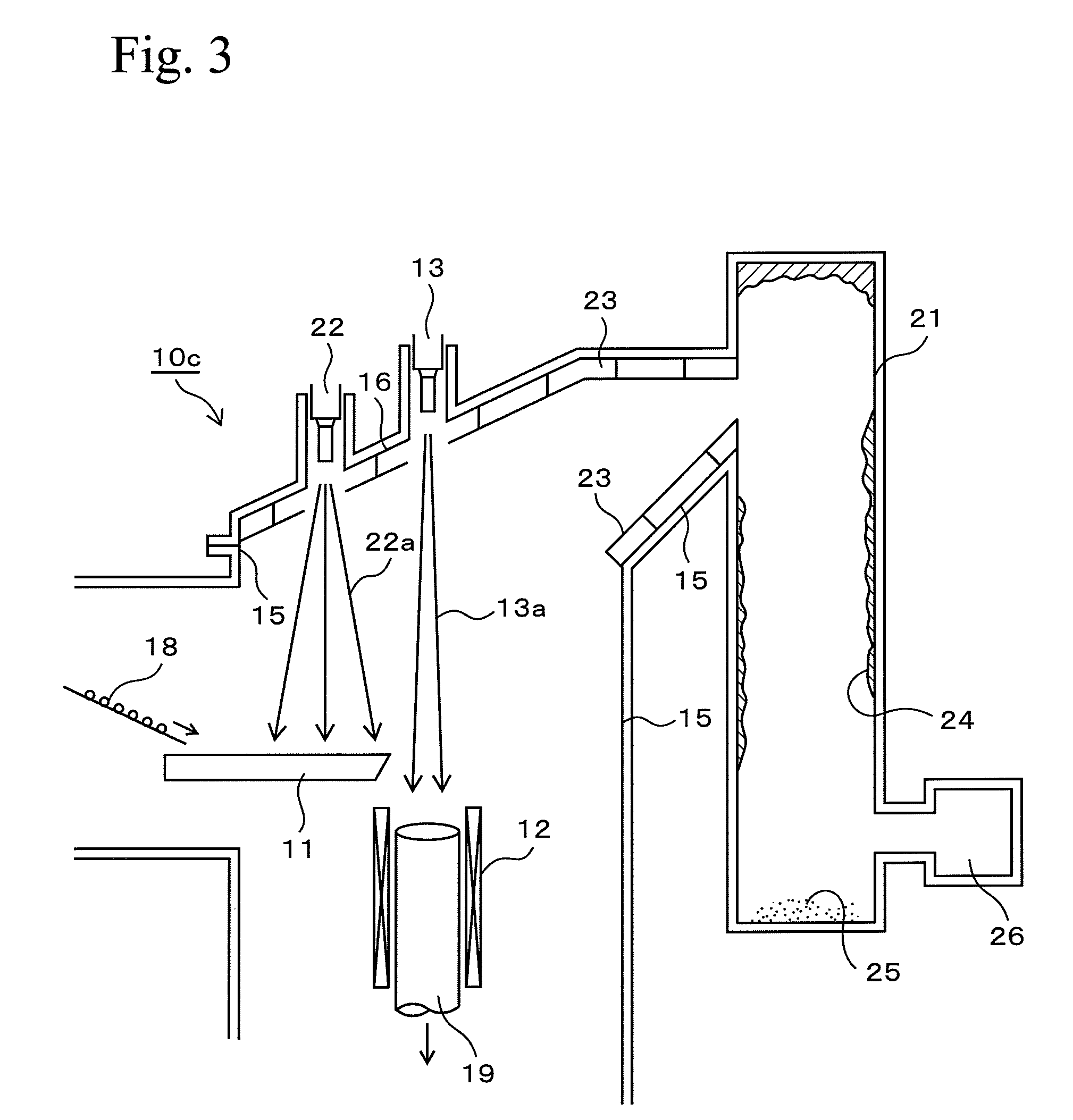Apparatus for melting metal by electron beams and process for producing high-melting metal ingot using this apparatus
a technology of electron beams and apparatus, which is applied in the field of apparatus for melting and producing ingots of refractory metals, can solve the problems of reducing furnace availability, reducing ingot quality, and reducing the weight of impurities or the like themselves, so as to achieve the effect of reducing impurities, reducing the contamination of impurities, and maintaining the quality of ingots at an extremely pure level
- Summary
- Abstract
- Description
- Claims
- Application Information
AI Technical Summary
Benefits of technology
Problems solved by technology
Method used
Image
Examples
example 1
[0085]Using the apparatus having a structure shown in FIGS. 1 to 3, 1000 kg of titanium sponge was melted by an electron beam in each apparatus to obtain titanium ingots. This operation was repeated 5 times using each apparatus to obtain 5 ingots, and the LDI in each titanium ingot generated was analyzed; however, no LDI was detected in each titanium ingot. Each ingot was forged and rolled to obtain thin plates, and they were then examined for LDI by X-ray illumination.
example 2
[0087]Using the electron-beam furnace 10d having an output of 2000 kW and having the ceiling lining, side wall lining, and bottom lining shown in FIG. 4, 15 ingots, each having a weight of 10 t, were produced. After the temperature in the furnace was reduced to room temperature, the furnace was disassembled, and the ceiling lining, side wall lining, and bottom lining were removed in that order. Next, after the inside of the furnace was cleaned, each lining which had been treated was attached on the inner surface of the furnace 10d to reassemble the furnace 10d to prepare for the next melting process. The time required for the preparation was 3 days.
[0088]It should be noted that the linings removed from the furnace were ground, washed with water, and dried to be prepared for the next assembling.
PUM
| Property | Measurement | Unit |
|---|---|---|
| temperature | aaaaa | aaaaa |
| temperature | aaaaa | aaaaa |
| weight | aaaaa | aaaaa |
Abstract
Description
Claims
Application Information
 Login to View More
Login to View More - R&D
- Intellectual Property
- Life Sciences
- Materials
- Tech Scout
- Unparalleled Data Quality
- Higher Quality Content
- 60% Fewer Hallucinations
Browse by: Latest US Patents, China's latest patents, Technical Efficacy Thesaurus, Application Domain, Technology Topic, Popular Technical Reports.
© 2025 PatSnap. All rights reserved.Legal|Privacy policy|Modern Slavery Act Transparency Statement|Sitemap|About US| Contact US: help@patsnap.com



